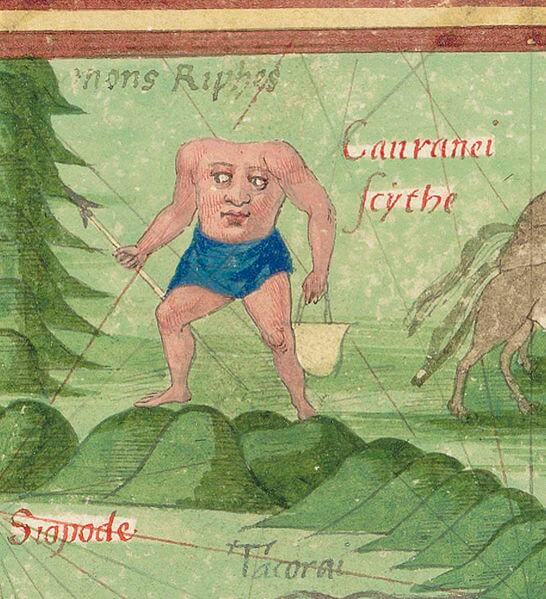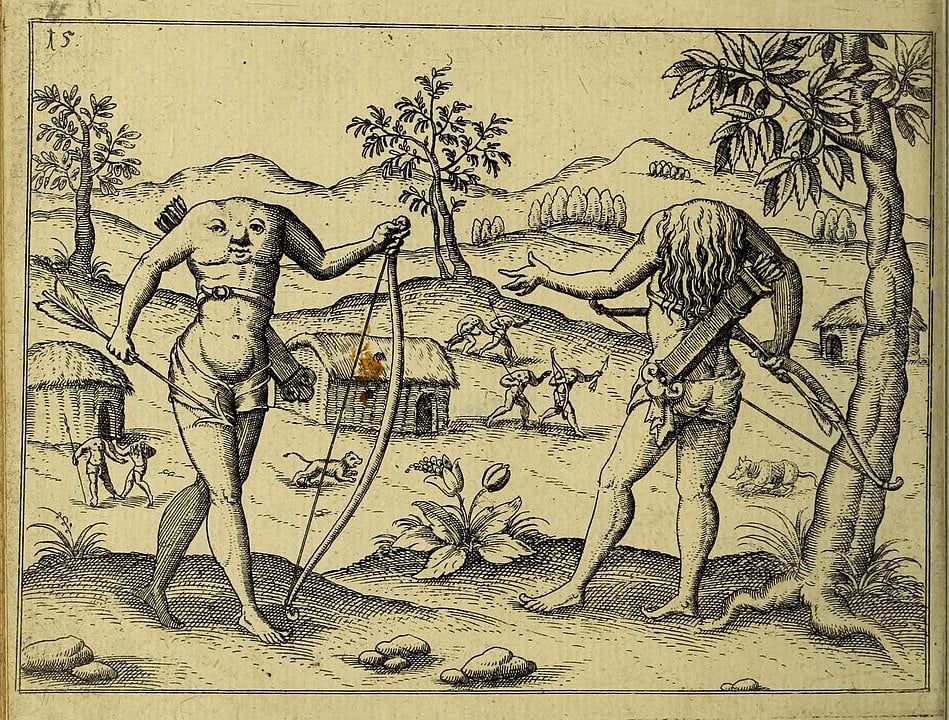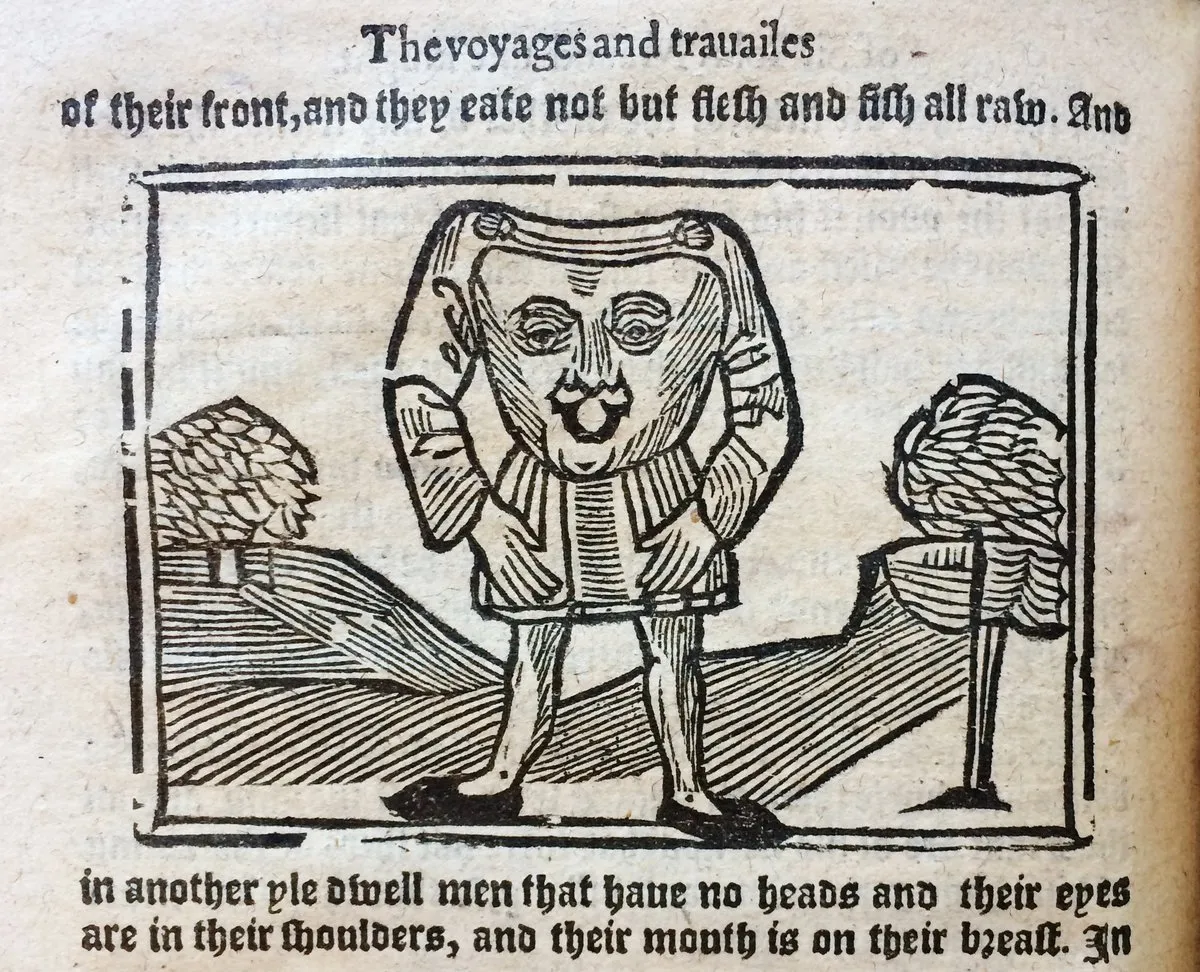
Table of Contents
The Blemmyae were a species of men frequently mentioned in ancient and medieval histories, who were known for their strange appearance. They were completely headless, but had their faces on their chests and were considered as some of the most unusual creatures ever to have walked the earth.
Who Were the Blemmyae?

The Blemmayes were desribed in Greek and Roman histories, and were typically thought to be a tribe of African men.
The Blemmyae (also known as Blemmyes, Chest-Eyes or Sternophthalmoi) were mythical people, said to be about six to twelve feet tall and almost half as wide. According to the ancient sources, they were said to have been cannibals.
When threatened, or when hunting, the Blemmyae had a very strange fighting stance. They either tucked their faces down, or could raise their shoulders to quite a height, nesting their face (or head) in between them, looking even more bizarre. In some accounts, they were said to have been very dangerous and aggressive beings.
Not much is known about the Blemmyae except about their appearance and their cannibalistic behavior. They have been mentioned in many sources, both ancient and medieval, described in various ways, which has led historians to develop varying theories about them.
The Blemmyae were believed to have lived along the River Nile but they were later said to have inhabited an island located in the Brisone River. Some say that they moved to India over time.
Beliefs About the Blemmyae
Although very few people today believe that such creatures as the Blemmyae once existed, there’s still much speculation about why the ancient writers wrote about such strange creatures. Some believe that the Blemmyae were aliens. Others believe that they were normal humans with extremely high shoulders due to a deformity or a modification done to their anatomy while they were children.
There are also theories that the headdress and traditional garments worn by the Blemmyae could have possibly given these ancient writers the idea that they were headless people when, in fact they weren’t.
Descriptions and Theories of the Blemmyae
1. The Blemmyae in Kalabsha
According to some ancient sources, the Blemmyae were actual people who inhabited an area that we now know as Sudan. The city was a large and well protected one, with well fortified towers and walls. It it became their capital city. It seems that the culture of the Blemmyae was almost the same as the Meroitic culture, having been influenced by it, and that they had several temples in Philae and Kalabsha.
According to the Greek scholar Procopius, the Blemmyae worshipped Priapus, the rustic Greek fertility god, and Osiris, the god of the afterlife and death. He also mentions that they often made human sacrificial offerings to the sun.
2. The Theories of Herodotus
In certain accounts, the origins of the Blemmyae began in lower regions of Nubia. These beings were later fictionalized as creatures who were believed to be headless monsters with their eyes and mouths on their upper torso. They were first mentioned in Herodotus’ work, ‘The Histories’ as early as 2,500 years ago.
According to the historian, the Blemmyae inhabited the western region of Libya which was thickly wooded, hilly and teeming with wildlife. The area was also home to many other strange creatures such as those with dog heads, gigantic snakes and horned donkeys. Although Herodotus had written about the Blemmyae, he hadn’t a given them a name, but only described their appearance in detail.

3. The Theories of Strabo and Pliny
The Greek historian and philosopher Strabo mentions the name ‘Blemmyes’ in his work ‘The Geography’. According to him, the Blemmyae weren’t bizarre-looking monsters but were a tribe that inhabited the lower regions of Nubia. However, Pliny, the Roman writer, equated them with the headless creatures that were mentioned by Herodotus.
Pliny states that the Blemmyae had no heads and that they had their eyes and mouths in their breasts. It’s likely that the theories of both Herodotus and Pliny was based only on what they’d heard about these creatures and that there was no actual evidence to back up these theories.
4. The Theories of Mandeville and Raleigh
The Blemmyae appeared once again in ‘The Travels of Sir John Mandeville’, a 14th century work which describes them as cursed folk with no heads, a foul stature and their eyes in their shoulders. However, according to Mandeville these creatures weren’t from Africa but from an Asian island instead.
Sir Walter Raleigh, the English explorer, also describes strange creatures that resemble the Blemmyae. According to his writings, they were called ‘Ewaipanoma’. He agrees with Mandeville’s report of the creatures having their eyes in their shoulders and states that their mouths were located in between their breasts. The Ewaipanoma were also said to have long hair that grew backwards between their shoulders and the men had beards that grew down to their feet.
Unlike the other historians, Raleigh states that these headless beings lived in South America. Although he hadn’t seen them with his own eyes, he believed that they actually existed because of what he’d read in certain accounts that he considered reliable.

Blemmyae in Literature
The Blemmyae have been mentioned in numerous works through the ages. Shakespeare mentions ‘Men whose heads stood in their breasts’ in The Tempest, and ‘Cannibals that each other eat….and men whose head do grow beneath their shoulders’ in Othello.
The mysterious figures have also been mentioned in modern works including Rick Riordan’s Trials of Apollo, Gene Wolfe’s Endangered Species and Valerio Massimo Manfredi’s La Torre della Solitudine.
In Brief
The Blemmyae seemed to have been a highly interesting race of people but unfortunately, only very little information about them is available in the ancient sources. While there are many beliefs and speculations about them, who they were and whether they really existed remains a mystery.








